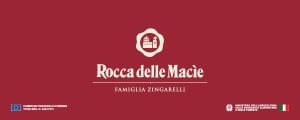In Italy, the occasional consumption of alcohol grows, while the daily one drops with wine, which is nomore the undisputed “king” of the table. The Annual Report 2025 by Istat, presented, in the last days, in Rome, and analyzed by WineNres, sheds light on this trend, which, talking about consumption habits of alcoholic beverages, explains how “deep transformations are observed in time: one passed from a moderate and daily consumption of wine during meals, to models which were more similar to those of Northern countries, which are not about only wine, but also beer and superalcoholic drinks. These, often consumed outside meals, and not daily, focus in specific occasions (for example, in the weekend), and, sometimes, are pushed towards excesses and binges (the so-called binge drinking)”.
Particularly, still explains the report, “in the last twenty five years, between population of 15 years and more, in front of an almost stability of overall alcohol consumption (wine, beer, other alcoholic drinks at least one time a year), corresponding to 70.6% in 1999, and to 68.7% in 2023, one assists, on the one hand, to the reduction of daily consumption (from 37.3% to 49.8%), and of that of snack(from 23.8% to 33.4%); and, the habit of binge drinking maintains almost steady (7.3% in 2003, and 7.8% in 2023). Very relevant differences are observed in the consumption of alcoholic drinks passing from North to South of the country, with much higher values in Central-Northern regions for all the different types of consumption habit of alcoholic drinks”.
In time, at the same age, daily consumption drops significantly from generation to generation. If, among those who born in the immediate after-war, the daily consumption reached 40.3% of range 45-49 years, among the peers born between 1970 and 1974, it passes to 18.8%. Opposite trend for out of meal consumption, which, if for people born between 1965 and 1969 corresponded to 29.6%, at the age of 35-39 years, it rises to 49.1% among those who born in generation 1985-1989. The daily consumption of alcoholic drinks interests more men than women, but the reduction is observed for both. That out of the meal shows, on the contrary, very similar ongoings for gender, but at higher levels for men. And, if the concept of “moderation” should be the way to follow for everyone, the habit to binges unveils as a typically young phenomenon with the maximum peak reached at 20-24 years, where it fluctuates around 15% in all the generations of born between 1984 and 2004, to, then, lower in the following ages. Among the generation of those born between 1970 and 1974, binge drinking regarded 9% at 35-39 years, percentage raising to 15.2% at the same age in those born between 1985 and 1989.
And, if Italy is the “cradle” of the Mediterranean Diet, for many the best overall for the benefits which can express, food habits are changing, and not in the best way. The daily consumption of fruits and vegetables, explains the report, underwent a strong decrease in 30 years, passing from about 94% in 1994 to 78.2% in 2024 for the civilization of 10 years and more. Data which is influenced by the choice of young people. At the same age, the most recent generations show less healthy habits: at the age of 30-34 years, the consumption of fruits and vegetables decreased from 89.1% among those born in 1960-1964 to 77.8% among those born in 1975-1979. Dynamics which are encountered both for men and women, with these lasts who have, anyway, higher levels of consumption than men. Therefore, it is not so much surprising that obesity is a worrying phenomenon. The analysis for generation highlights an increase of weight excess, mainly among young people, so that in age classes of 20-39 years, the excess of weight grows sensibly, particularly among those born since the Eighties of the last century on. At 20-24 years, those born in 2000-2004 shares of weight excess which are clearly higher compared compared to people of the same age of previous generations (21.6% against 13.4% of those born in 1960-1964), with a more marked increase among women.
In the change of lifestyles, positive aspects don’t miss anyway, to begin with the drop in smokers, or the fact that, in the last 30 years, still highlights Istat Report, increasingly more people dedicate to physical sport activities with an increase due to the practice of sport in a continuous way (from 16.6% of population of 10 years and more in 1995, to 27.6% in 2023). And, going back to the right and correct nutrition, in time, the habit to consume a breakfast which can be defined as adequate increased. A good habit which, in 2024, regards only 80.1% of the civilization from 10 years on (it was around 68% 30 years ago). The most “virtuous” were guys of 10-14 years with levels reducing among young people up to 29 years, to, then, increase again in following age classes.
Copyright © 2000/2025
Contatti: info@winenews.it
Seguici anche su Twitter: @WineNewsIt
Seguici anche su Facebook: @winenewsit
Questo articolo è tratto dall'archivio di WineNews - Tutti i diritti riservati - Copyright © 2000/2025









































































































































































































